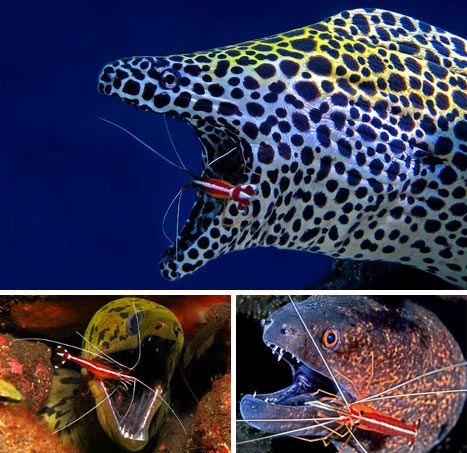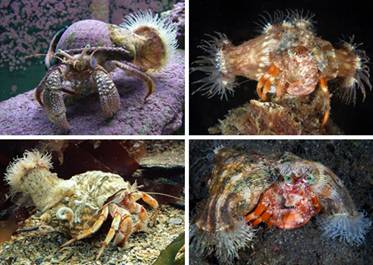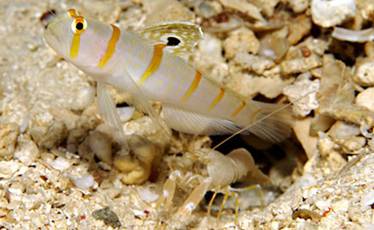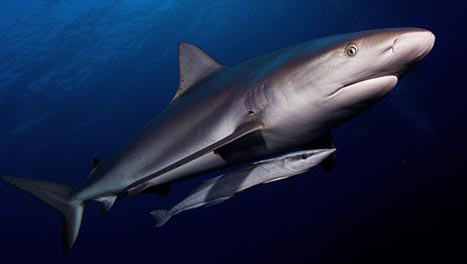These relationships are mutually beneficial
A relationship between two individuals (animals, plants, people .) only exists for a long time if both sides benefit. If a relationship only benefits one party, that relationship will not last long. That is the law of symbiosis.

This sanitary shrimp is madly reckless. They even climbed into the mouth full of sharp, jagged teeth of eels, digging around their teeth to find food. This is a long-standing feeding habit of this species, they specialize in eating parasites in the mouth of eel and fish species.

Some borrowed snails and sea crabs often carry anemones on their backs. Not the sea anemones tired legs and want to ride, actually both benefit: snails use anemones to ward off enemies (because anemones contain toxins in their tassels), on the contrary, sea anemones thanks to snails that can escape the status of 'immortal sales' and can earn more food when traveling with snails.

Goby and hard shell shrimp live happily together. Both live in a cave made by shrimps, and fish are responsible for protecting shrimp. The eyesight of this shrimp is very poor, so they have to rely on the very eyes of the world for a while to be safe to go out. On the contrary, prawns rely on shrimp to have a 'home' to take refuge and rest.

Sharks are probably the least favored species in the ocean. They are big, cruel, cruel. So why are they so generous for fish to stick to their stomachs? In the past, this relationship was supposed to be a congenital relationship - a species benefited, and a species did not enjoy anything, but now everything is clear, not only picking up leftovers of sharks and pressed fish. help clean parasites that live under the belly of sharks; and their benefits from sharks were obvious: no matter how much fish they craved, no animal dared to hang around in front of 'death'.

The scabies fish are horrible appearance, they are quite tricky when using their own victims to seduce other victims. Their 'rice rod' is the glowing antenna that swings overhead, in fact this species is incapable of glowing, that light comes from millions of glowing bacteria - a dish of flake fish. feet - cling to them to prevent them from drifting into the terrible mouth below.

These emperor shrimps often ride on animals that are many times larger than them, and move faster than them. When this giant "moving vehicle" moves under the sea, 'emperor' will swing down to pick up pieces of food mixed in the mud.

Clownfish are probably the only species capable of resisting anemone's toxins. They can bounce back and forth between poison-filled tassels without any harm. Anemones eat the rest of the fish, and in response, they protect this fish from being eaten by another species.
- WiMAX and 3G are not two mutually exclusive technologies?
- Shocking findings: 94% of giraffes are studied for homosexual relationships
- Unexpected discovery of beverages and beneficial bacteria supplements
- Find out how to bring cancer medicine to people more effectively with beneficial bacteria
- Negative influence of money on human relationships
- Each apple contains up to 100 million beneficial bacteria for health
- Temporary changes help stabilize long-term relationships
- Check out the types of polar bacteria that are beneficial to humans
- Discover more types of beneficial bacteria in the intestinal tract
- Inbreeding is beneficial for fish
- Why Green is beneficial for the eyes?
- Sharks also need friends
 Surprised: Fish that live in the dark ocean still see colors
Surprised: Fish that live in the dark ocean still see colors Japan suddenly caught the creature that caused the earthquake in the legend
Japan suddenly caught the creature that caused the earthquake in the legend A series of gray whale carcasses washed ashore on California's coast
A series of gray whale carcasses washed ashore on California's coast Compare the size of shark species in the world
Compare the size of shark species in the world